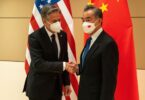The repeated claims of the PML-N government about induction of 10000 megawatts of power in the distribution system evaporated in thin air. The move to convert the furnace oil and diesel run thermal power plants to a relatively cheaper power generation source of Liquefied Natural Gas (LNG) also backfired. The government has lifted the ban imposed on the import of furnace oil for running power plants and has directed the state owned Pakistan State Oil (PSO) to place orders for bringing fuel cargo in order to meet growing electricity demand in summer.
Taking cognizance of the rising trend in the prices of crude oil and petroleum products the government preferred LNG in electricity production. A few months ago a hasty decision was taken to impose ban on the import of furnace oil. Since then PSO had placed no orders for its import and the power producers who run their plants on furnace oil opted for shut down and the overall power supply went down that necessitated four hours load shedding in the month of march the duration of which may become much longer in the next few months if smooth supply of furnace oil is not ensured.
At present demand for electricity supply stand close to 17000 megawatts, which is expected to cross 20000 megawatts in the peak summer season. On the other hand, the much cheaper hydroelectric power generation has dipped to 1050 megawatts from the installed capacity of 7000 megawatts because of slow down in water inflows in rivers. As predicted by Pakistan Meteorological Department, if rainfall becomes scarce in the next few months then the supply of hydro power generation will not improve to grater extent which will exacerbate the problem of power outages in this summer.
The menace of circular debt causes reduction in thermal power generation. The present government cleared the carryover liability of Rs. 480 billion in 2013. But it piled up again to Rs. one trillion by December, 2017. However the government acknowledges the circular debt liability of Rs.525 billion. The Economic Coordination Committee (ECC) had approved a circular debt settlement plan on March 7 in an attempt to immediately pay Rs. 80 billion to Independent Power Producers IPPs) and fuel suppliers to manage circular debt to some extent. It was decided to acquire loans from commercial banks and shift the back breaking burden of debt servicing to the consumers in the monthly electricity bills. As per conservative estimate consumers will pay additional 43 paisa per unit to service the debt. The consumers are already paying certain amount of debt surcharge for the Past two years. National Electric Power Regulatory Authority (NEPRA) has recommended the merger of electricity duty, Nelum Jhelum and equalization surcharges with the per unit electricity tariff which will add another 70 paisa per unit to electricity price. It will make the electricity tariff unaffordable for both domestic and commercial consumers.
The reason for the enormous amount of circular debt accumulation is that in the second tenure of PPP government cobweb agreements were made with IPPs due which poor consumers have to pay for electricity whichis not produced and supplied to the national grid, not it was consumed by them. It is because of these agreements, made against national interest, that Rs.525 circular debt includes Rs. 312 billion in energy cost, Rs. 214 billion in capacity charges, liquidity damages and loans mark up. The agreements signed with the private power producers have made them accountable to none. They do not allow the audit of electricity generation cost and the government lost cases against aTurkish Rental Power Plant and 9Pakistani IPPs in the international arbitration courts. A compensation of $ 800 million was paid on this account. Now the consumers will have to pay for the electricity which is not being supplied to the national grid by private power producers by virtue of the capacity charges clause despite the shutdown of thermal power plants due to shortage of furnace oil created by the wrong decision of the present government.
The Nitti Gritty of the agreements made with the Chinese private power producing companies by the present government has not been made public. But whatever information is made available to media that suggest that a revolving fund comprising commercial loans will be created in banks for the purchase of electricity from Chinese companies. If the agreements with Chinese companies also envisage the clauses of capacity charges and liquidity damages then the future electricity tariff will not be affordable for the consumers. Permanent solution lies in power generation from renewable and sustainable sources of energy like water, wind and sun which has not been the priority of either PPP or PML-N governments.






